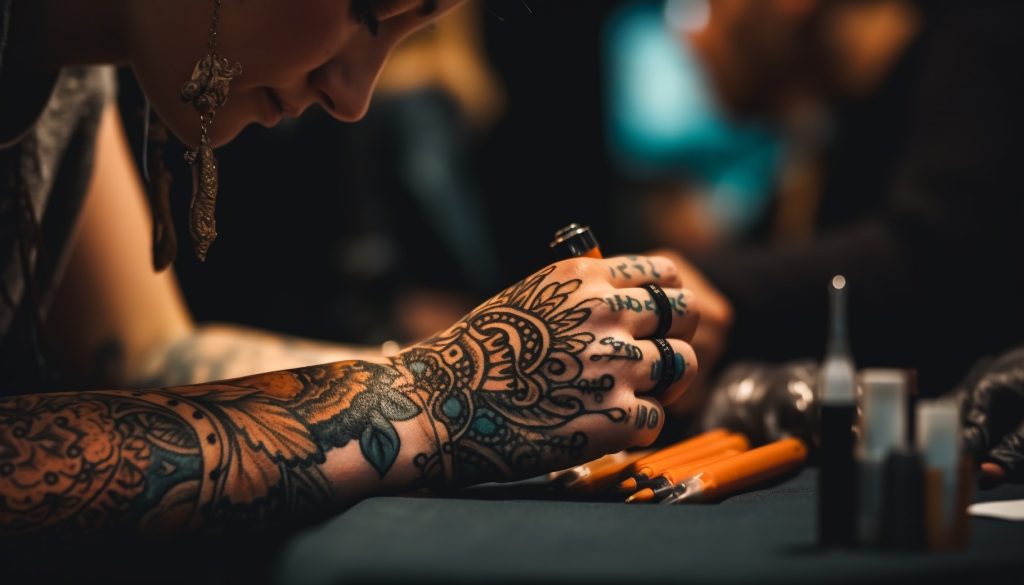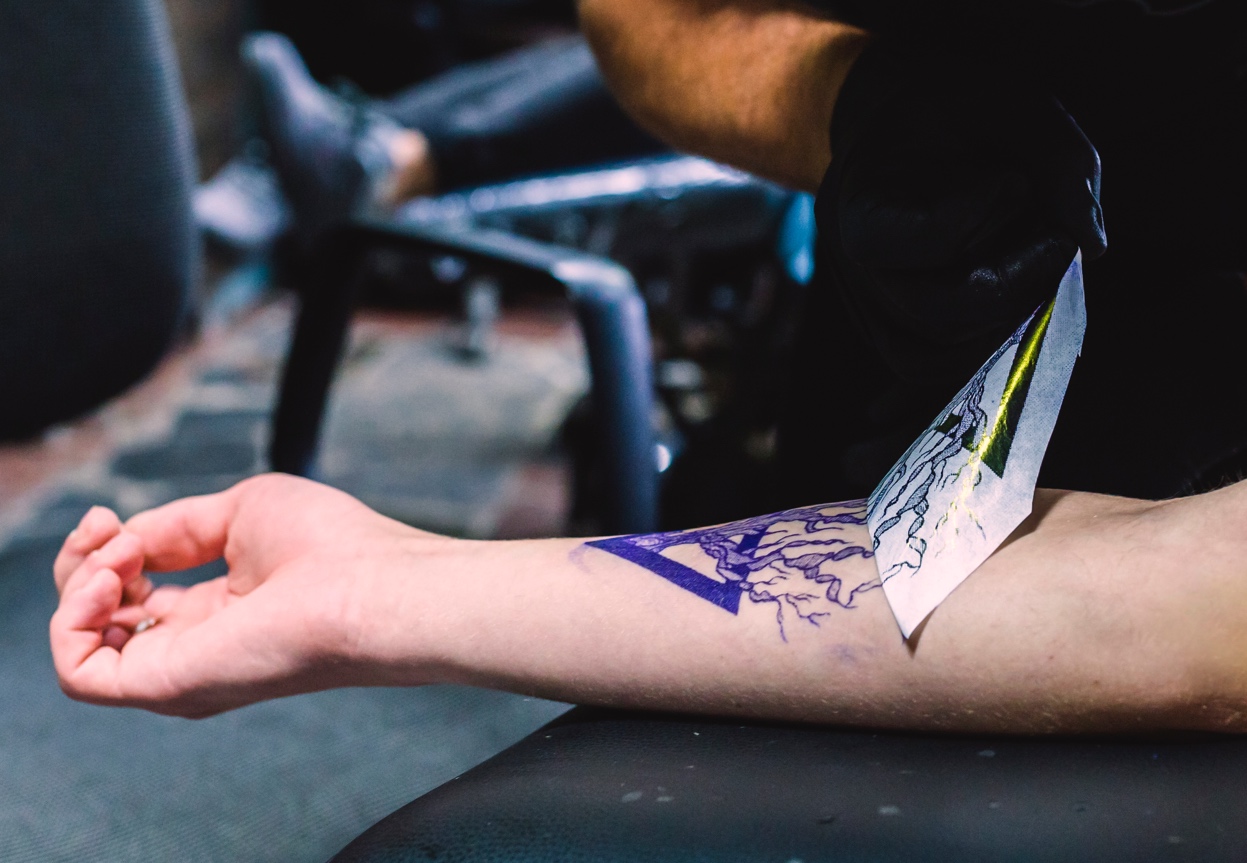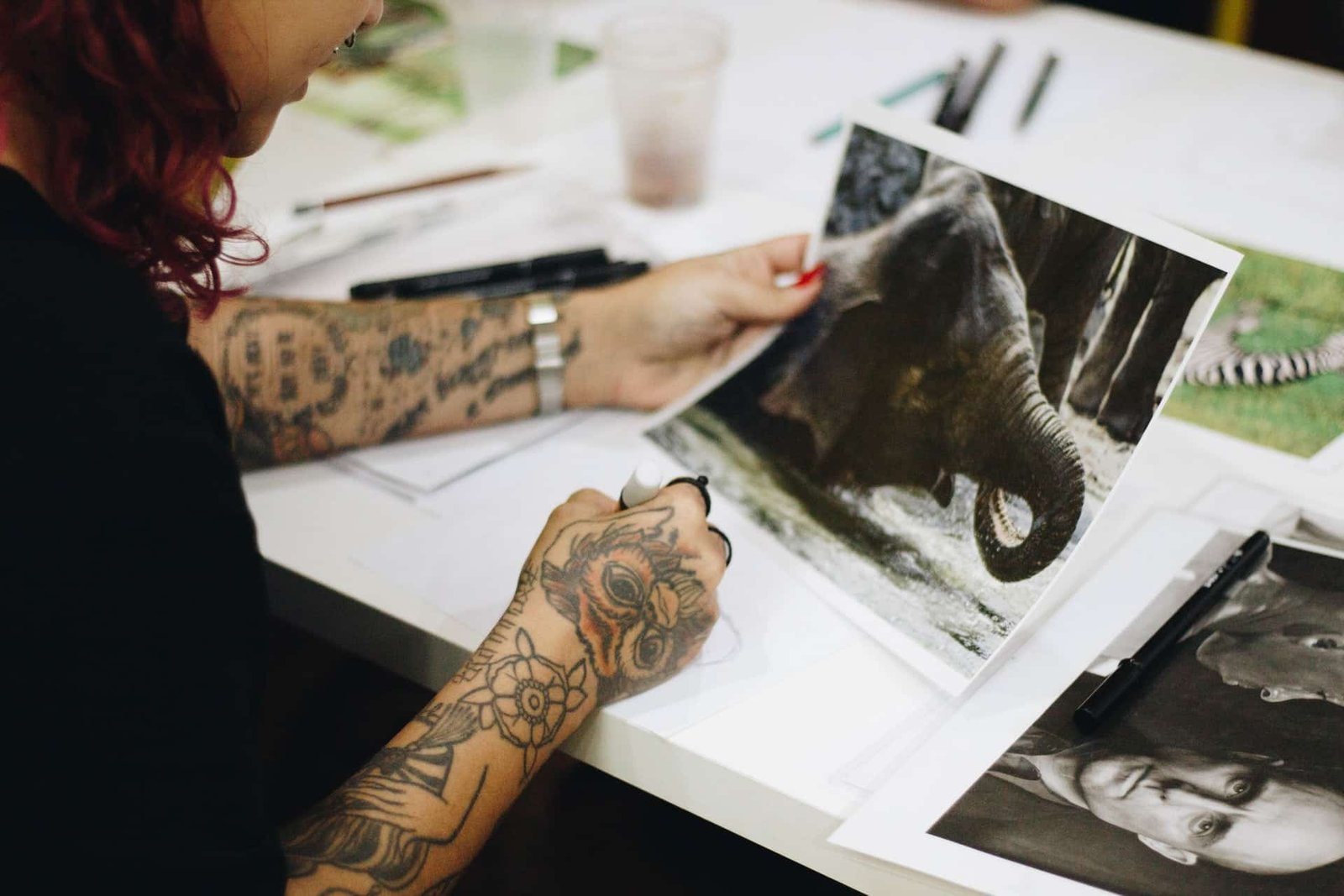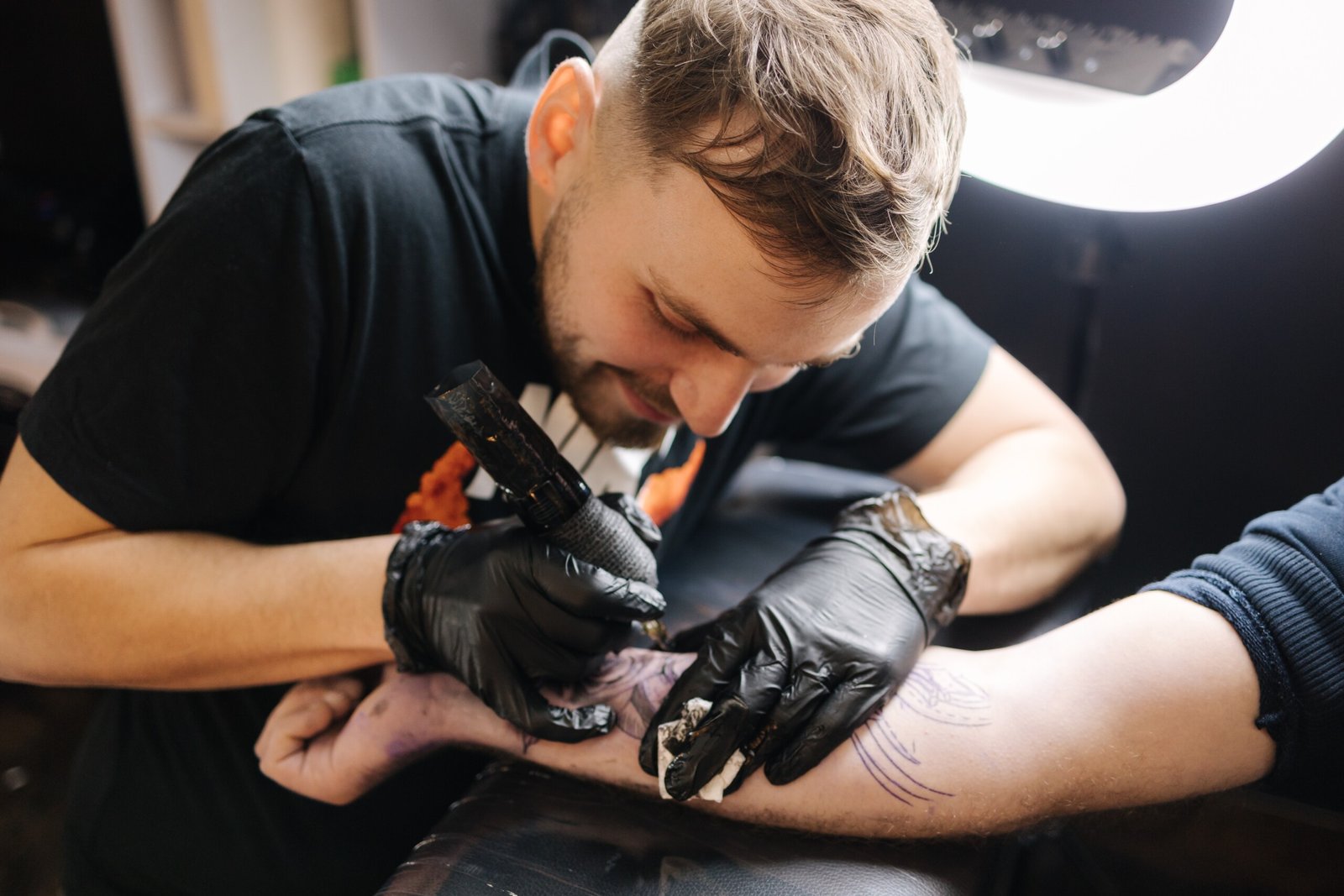

Tattoo art has become a popular medium of self-expression around the world. For a newbie tattoo artist, exploring ideas and designs is a crucial step in expanding their skills and style. Embarking on this journey requires a deep understanding of ideas, techniques and the ability to produce compelling work.
Tattooing is a type of art that mixes creativity with accuracy. For new tattoo artists, learning this skill can feel overwhelming at first. Designing tattoos isn’t just about drawing; it’s about making art that connects with the client, fits the shape of their body, and lasts a long time. Whether you’re just beginning or trying to get better, here are some important tips to help improve your tattoo designs.

1. Explore Inspiration:
For a beginner tattoo artist, finding inspiration is a great start. This can come from a variety of sources, ranging from nature, culture, traditional art, to modern design. Observing visual art, reading books on tattoo history or exploring the work of famous tattoo artists can open the mind to a variety of ideas.
2. Finding Style and Identity:
Every tattoo artist has a unique style. For beginners, finding an identity in tattoo art can involve experimenting with different techniques and designs. Whether it is realistic, traditional, neo-traditional, abstract or other styles, it is important to explore and find the best fit for personal expression.
3. Importance of Design and Planning:
Before applying a tattoo on the skin, carefully planning the design is an important step. For beginner tattoo artists, sketching, drawing or using graphic design software can help visualize ideas better. It is also possible to give the client a chance to give feedback before the tattooing process begins.
4. Techniques and Skills:
Having a solid understanding of tattoo techniques is important. Beginning artists need to learn about tattoo machines, various needles, sterilization and shading or lining techniques. Training and hands-on practice are necessary to master these techniques well.
5. Professional Ethics:
Besides the creative and technical aspects, it is also important for a tattoo artist to understand professional ethics. This includes good communication with clients, a deep understanding of tool sterilization, and respecting the principles of hygiene to keep clients safe.

If you’re a beginner artist venturing into the world of tattooing, mastering easy tattoo designs should be your first step. These designs are the building blocks for more complex artwork.
1. Start with a Simple Design
Starting with a simple design is the best strategy for beginner tattoo artists. It allows you to grasp the basic skills without feeling overburdened. Some things to consider are:
Sketching Basics
Good sketching skills form the basis of a tattoo’s success. Start by practicing simple shapes like circles, squares and triangles. Focus on smooth lines and master your hand movements. As you get more comfortable, try drawing simple tattoos for beginner artists, such as hearts or stars.
Understand Shapes and Shadows
Shadows give depth to your tattoo, making it look more realistic. To get the hang of it, start with basic shapes, such as spheres or cubes and practice shading them. Use different pressures to create different levels of shadows.
Practice with Different Styles
Experiment with different tattoo styles. From traditional to tribal tattoos, realism to new styles tattoo, each style has its own appeal. This will not only help you discover your personal preferences, but will also enable you to produce simple tattoos. The key to mastering simple designs is patience and practice.

2. Choosing the Right Tool
Choosing the right tool is an important step in your journey towards becoming a successful tattoo artist. The right tools not only ease the process, but also play a vital role in the final outcome of your tattoo. Here’s what you need to know:
Choosing a Tattoo Needle
The tattoo needle is your magic wand that will bring your design to life. There are different types of needles, each serving a specific purpose. Round liners are great for lines and details, while magnum needles are perfect for shading and coloring. As a beginner, start with a basic needle set and explore what works best for you.
Using Quality Ink
Quality ink is important for a vibrant and long-lasting tattoo. Brands like Intenze, Eternal and Kuro Sumi are known for premium quality tattoo inks. Remember, your client’s safety and satisfaction are of utmost importance, so never sacrifice ink quality.
Taking Care of Your Tattoo Machine
Your tattoo machine is your best friend. Regular maintenance of your machine ensures its smooth operation and long life. Clean it regularly, replace worn parts and don’t forget to lubricate moving parts. A well-maintained machine will make tattooing easier for newbie tattoo artists.
3. Learn The Stencil Art
Stenciling is an essential technique for any tattoo artist to guide, ensure accuracy and reduce the chance of mistakes. Let’s dive into the art of stenciling:
Making Tattoo Stencils
Creating a stencil is a skill in itself. It involves transferring your design onto stencil paper using a thermal printer or by hand tracing. The key is to keep the design simple and clear. Remember, the stencil is a guide, not a finished piece. It helps you visualize the tattoo on the skin before you start inking. So, keep it simple and clean for an easy tattoo design for beginner artists.
Applying the Stencil on the Skin
The next step is to transfer the stencil to the skin. Clean the skin with an antiseptic solution first, and then apply the stencil solution. Gently place the stencil, design side down, onto the skin. Be careful not to move it to avoid smudging. Once the design has been moved, allow it to dry before you start tattooing.
Tips for Stencil to be Success
Here are some tips for creating a successful stencil: First, practice your stencil technique as much as possible. The more you practice, the better results you will get. Second, use high-quality stencil paper and solution for clear and long-lasting designs. Lastly, always check the accuracy of the stencil before you start tattooing. It’s easier to fix a stencil than a tattoo!
4. Understand The Tattoo Aftercare
Once the tattooing process is complete, the next job is maintenance. Proper care ensures that the tattoo heals properly and looks as attractive as desired.
The Importance of Aftercare
The healing process is crucial to the final appearance of the tattoo. Aftercare helps protect the tattoo and the skin, so clients can show off your artwork with pride.
Recommending Aftercare Products
There are tons of aftercare products available, but not all of them are the same. Some products to consider include Tattoo Goo, After Inked, and Hustle Butter Deluxe. These products are specifically designed for tattoo aftercare and contain skin-nourishing ingredients that help speed up the healing process. Remember, the right products can make a significant difference in the tattoo healing process.
Guide Clients in Aftercare
As an artist, it is your responsibility to guide your clients on tattoo aftercare. Teach them about the dos and don’ts and ask clients to always keep the tattoo clean, avoid direct sunlight, don’t pick at the scabs and so on. Providing written guidelines on aftercare can be of great help to them.

Tattooing is an ever-evolving art form that requires continuous learning and dedication. For newbie tattoo artists, developing a strong foundation in design, technique, and client communication is essential. Master the basics, embrace feedback, and always aim to improve. With time and persistence, you’ll find your unique style and grow into a skilled tattoo artist.